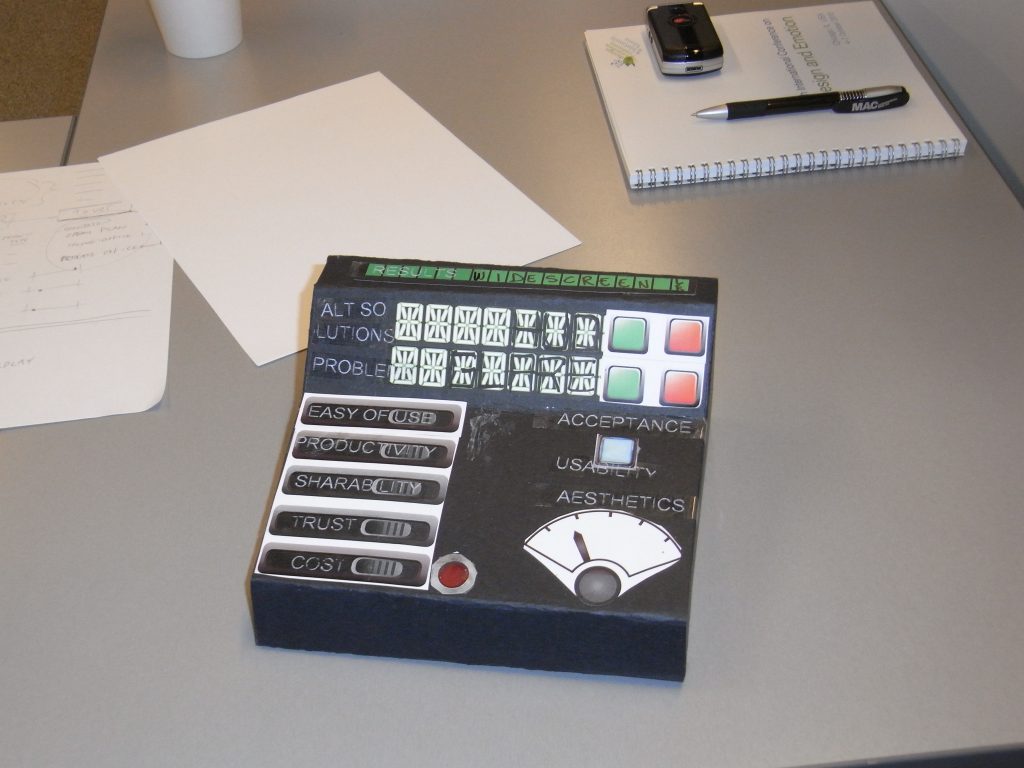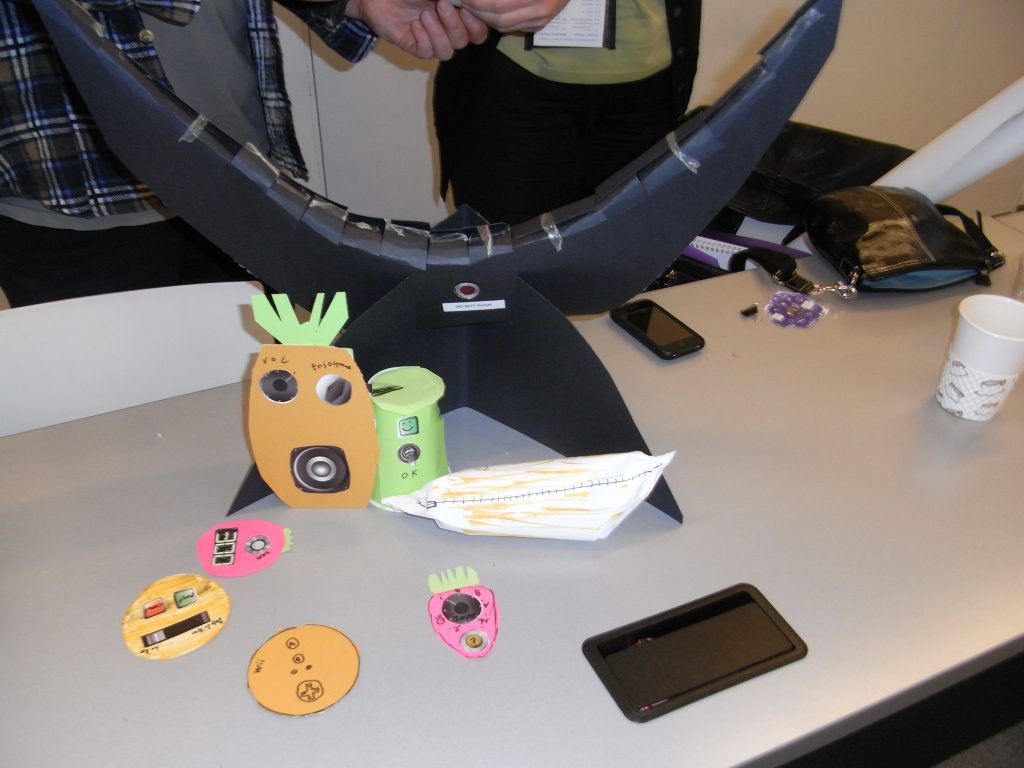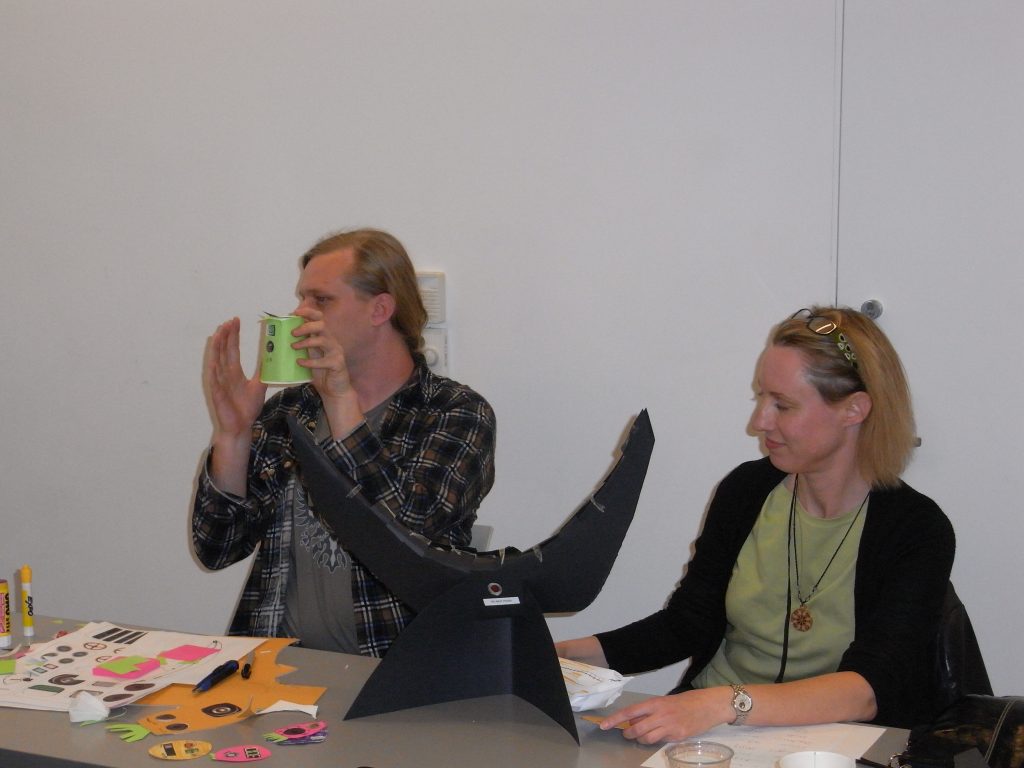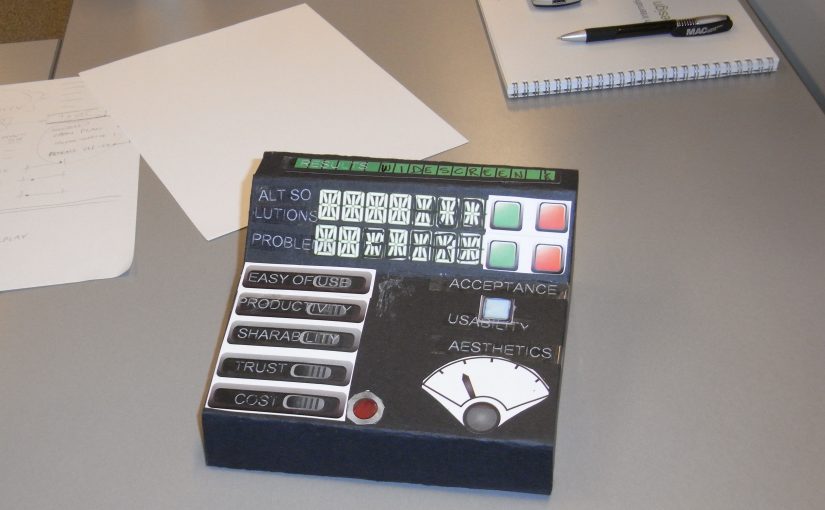This workshop was created for the 7th International Conference on Design & Emotion, Blatantly Blues, IIT Institute of Design, Chicago. 4th-7th October, 2010
The workshop proposal was originally written with Cris Degroot, but during the conference was helped by Tim Parsons. The workshop is a further exploration of the nature of interface/dashboard design for so-called black boxes.
For many years I had run a workshop with students looking at creating an interface for their projects based on a dashboard. It is a way of expressing the critical elements of a project in a tangible way.
The workshop uses examples from design (Mario Bellini’s Cuboglass TV for Brionvega), DIY (Hacked electronic instruments by Olaf Ladousse) and fine art (machine interfaces by Simon Morse) to explore the nature of a black box and its potential for designers. The aim is to create interfaces that are magical, playful or poetic rather than tediously efficient. These are a close relation to Tony Dunne and Fiona Raby’s model of a ‘post-optimal’ object, and probably a more fruitful route for a designer looking to create some kind of meaning in their work.
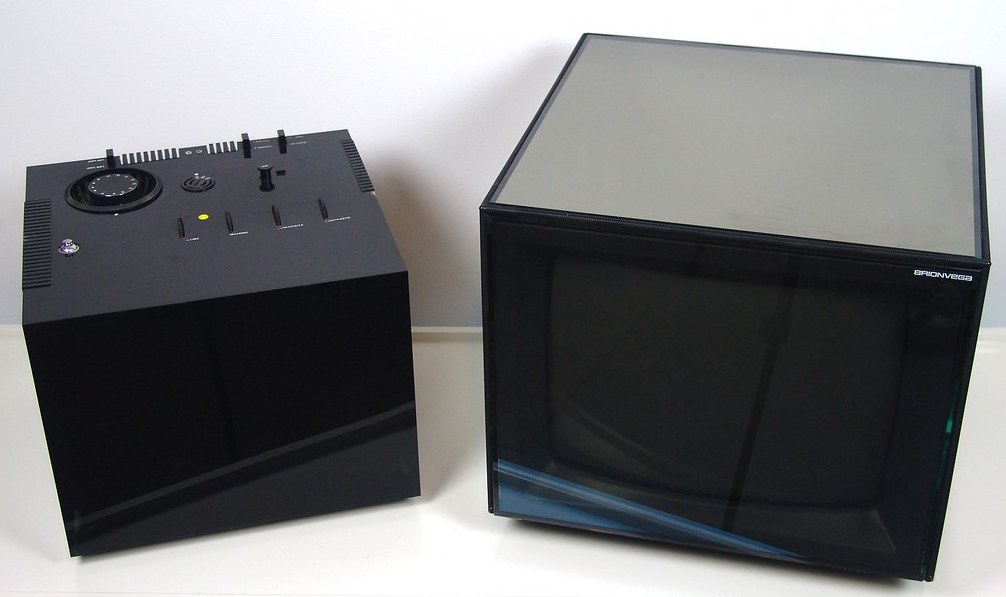


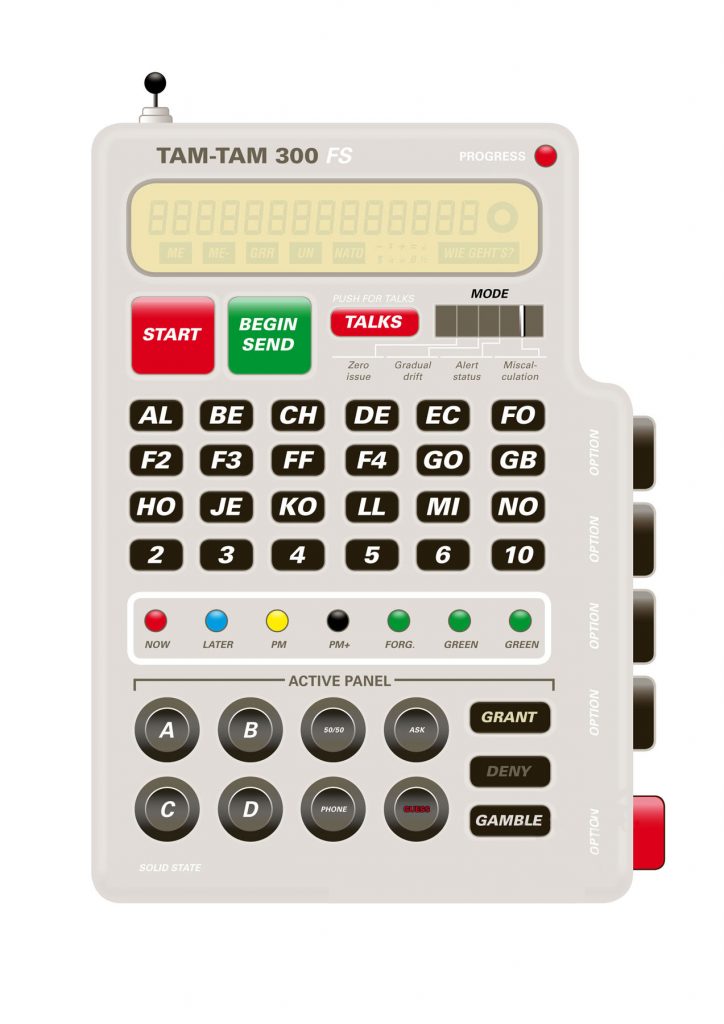
Abstract: A workshop exploring the nature of magical interfaces through the use of hands-on modeling and prototyping. The relationship between Design and Magic is presented through examples, some of which have featured in previous Design and Emotion conferences. This is linked to the concept of the Black Box in both industrial design and fine art. A practical exercise will involve creating objects with obscure functions and magical interfaces from which this archetype can be understood in greater depth. The methods in the workshop have applications in areas of art and design education, information mapping, interaction design, project communication and ideation. This is intended to be a stimulating and engaging workshop that develops the potential for unexpected, poetic interfaces in the necessarily unadventurous world of equipment design. No modeling skills are required to register for the workshop. All materials will be provided.
